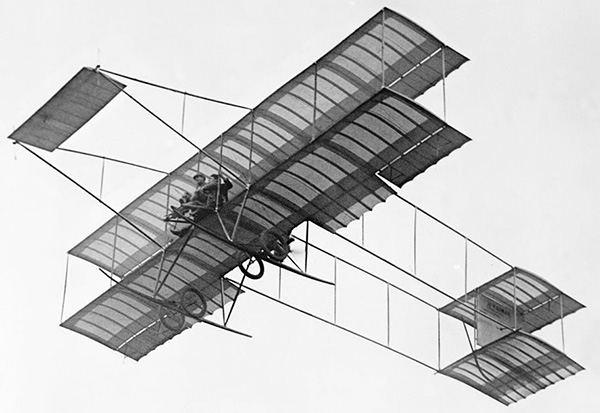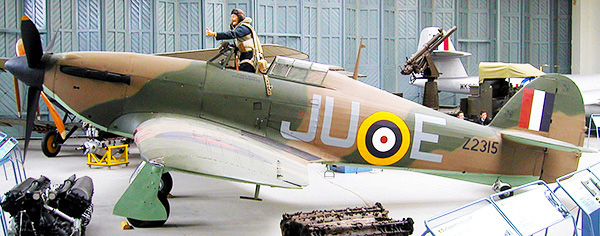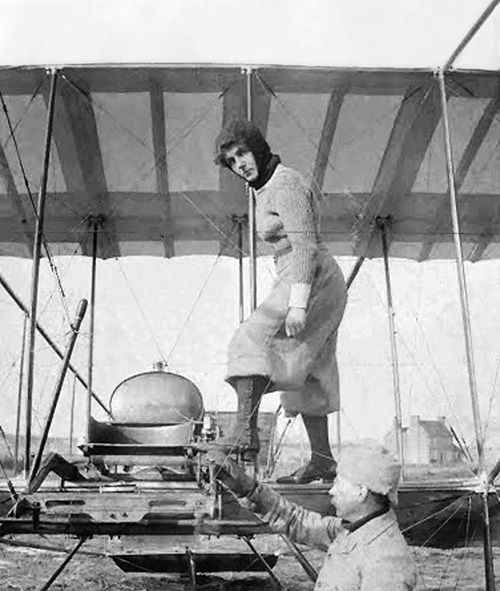Hilda Hewlett Revisited
Today, Hilda Hewlett takes flight. The University of Houston's College of Engineering presents this series about the machines that make our civilization run and the people whose ingenuity created them.
Flight was a young-man's game in the early 19th century. But Hilda Hewlett was neither a man nor was she young. She was 45 years old in 1909 when she saw her first air show at the seaside town of Blackpool, England. She had, by then, become an expert wood, metal and fabric worker, a nurse, and a competitive car racer. She'd also married a writer, and she had two children.
Now she was bitten by the airplane bug. She took an assumed name, Grace Bird, and went off to France to get her pilot's license. She went to the French Farman Brother's aeroplane factory to learn from them. She also bought a primitive Farman III aeroplane. And she met aviation engineer, Gustav Blondeau.

A Farman III (Image courtesy of Wikimedia Commons.)
Hewlett convinced Blondeau that he should join her in setting up a British flying school. They located in southeast England, near an auto race track. The school was a success - with a perfect safety record. That was unheard of in those days.
And, among their first students was none other than Thomas Sopwith! Sopwith, who went on to build the airplanes that prevailed in WW-I. Sopwith, who later helped design the Hawker Hurricane. Few people know that the Hurricane shot down far more German planes during the Battle of Britain than its more famous cousin, the Spitfire. If Hewlett had done no more than set up the school that taught Sopwith, her impact on British history would still have been huge.

Hawker Hurricane in the Duxford Imperial War Museum. (Photo by John Lienhard)
She also taught her son Francis to fly; and he went on to become a Group Captain in WW-I. By the way, Hilda Hewlett didn't get a British flying license until 1911. Even then, that made her the first British woman licensed to fly.
Next, she and Blondeau set up an airplane factory. At first, they were licensed to build several early French models. Then they built 800 planes for the Allies during WW-I. They tried retooling to make agricultural equipment after the war. That didn't pan out, and the business closed in 1920.
Hilda's husband, Maurice Hewlett, was a highly successful author and essayist. J. M. Barrie, author of Peter Pan, was a good friend. So Barrie gave one of his pirates the name Cecco. That'd been the nickname of the Hewlett's son Francis when he was still a child.
But Maurice had little sympathy for Hilda's interest in flying. "Women," he said, "will never be as successful in aviation as men. They have not the right kind of nerve." I guess it's no surprise that the couple separated at the beginning of WW-I.
So, at the age of 62, Hewlett sold the factory site and moved to Tauranga, New Zealand, with her daughter's family. She meant to enjoy fishing and camping, but old habits die hard. When she was 75, she became first president of the Tauranga Aero and Gliding Club. And, at the end, her family's term of affection for the venerable Hilda Hewlett was, "Old Bird."
I'm John Lienhard at the University of Houston, where we're interested in the way inventive minds work.
I'd forgotten that I'd already done an episode on Hilda Hewlett four years earlier when I wrote this one. Readers might find the earlier episode interesting. See: Episode 2667. The two episodes do not overlap completely. Each contains a bit information not included in the other.
For more on Sopwith, see: D. Sharp, "A Day at the Races," Duelling Above the Trenches: Sopwith Aircraft of the Great War. (Horncastle, Lincolnshire: Mortons Media Group, Ltd., 2014), See, esp. pg. 8.
I do not have access to Hilda Hewlett's granddaughter's biography, but it is: G. Hewlett, 'Old Bird' - The Irrepressible Mrs. Hewlett. (Troubador Publishing, Ltd. 2010).
Click on: P. I. Winton, "Hewlett, Hilda Beatrice," Dictionary of New Zealand Biography. Te Ara - the Encyclopedia of New Zealand, Updated 9-Oct-2013.
See also, the Wikipedia entries for Hilda Hewlett, Maurice Hewlett, Farman Aviation Works,Farman III airplane.

Hilda Hewlett boarding an early airplane. (Image courtesy of the Royal Aero Club.)
This episode was first aired on September 29, 2014